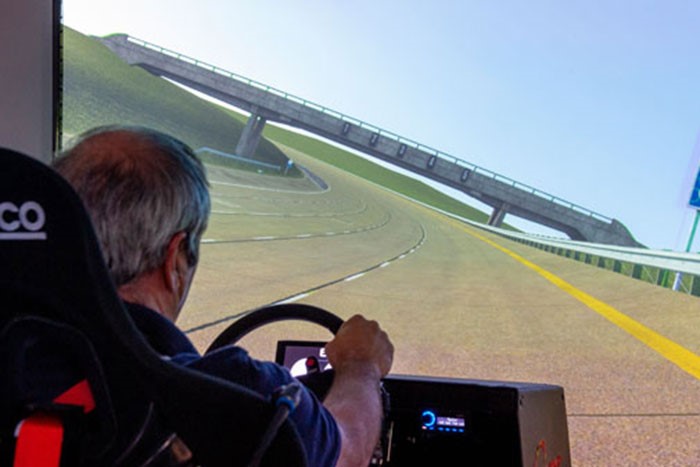
Simulation environment improves driver safety and accelerates vehicle testing
Tracks have been digitally modelled with 1mm surface accuracy. In addition to replicating the different tracks surfaces and surroundings, the facility can simulate a variety of weather conditions, including rain, snow, sleet, changing light, clouds and sun angles. This creates an environment that is as close to real-world conditions as possible.
The digital system features a comprehensive biometric assessment package, adding an extra layer of driver assessment and further increasing safety. The package includes eye and head motion tracking, blink rate and ECG measurements that can be used to assess reactions to objects, monitor concentration and detect drowsiness.
Andrew Hack, Senior Driver Trainer at Millbrook, said: “Drivers can now familiarise themselves with vehicles, routes and conditions before driving on our test tracks. Coaching them to drive in wet conditions or to control a puncture in our simulated environment means they are better prepared for the real world.”
The benefits of the simulator also extend to Millbrook’s customers. As vehicle systems can be developed digitally, the simulator enables customers to conduct testing before a physical vehicle is ready to be driven on Millbrook’s outdoor test tracks. This means that alterations can be made earlier in the development cycle and customers can reduce the risk of delays downstream.
Alison Smith, one of Millbrook’s experienced drivers, said: “Our simulator helps us to provide customers with data earlier, resulting in more efficient solutions. I am proud to work with such accurate and capable technology to help customers develop great vehicles.”
The simulation environment consists of a full suite of professional software, a driving simulator, HiL rigs and tool chains for modelling and simulation of vehicle dynamics, terrain, environment, sensors, traffic and connectivity. When integrated together, these elements create a unique environment for offline and real-time simulation of connected and autonomous vehicles (CAVs) and their subsystems, including ADAS.
Peter Stoker, Chief Engineer – Connected & Autonomous Vehicle at Millbrook, said, “The simulation environment represents a significant step forward in the development and testing of CAVs and related systems. Thanks to the flexible and modular architecture of the simulator, the virtual environment can be configured to accommodate a multitude of applications and scenarios. This provides customers with a unique opportunity to rigorously test CAV systems before the physical vehicle is ready for the road.”
The project has been supported by funding from the Centre for Connected and Autonomous Vehicles (CCAV).






